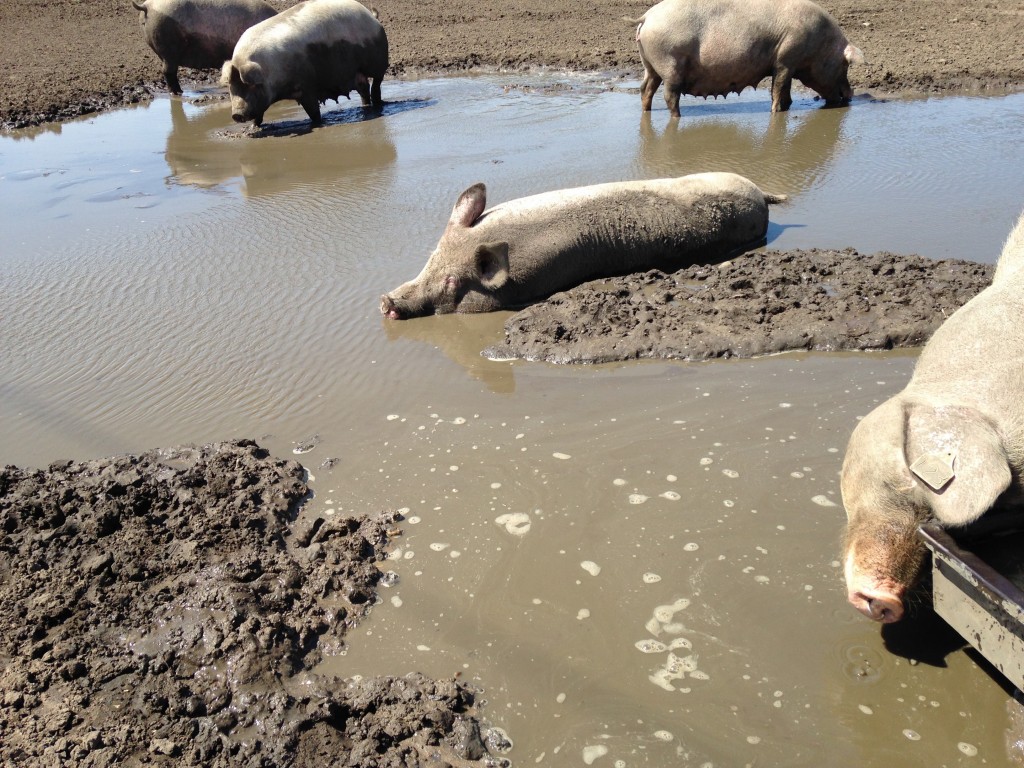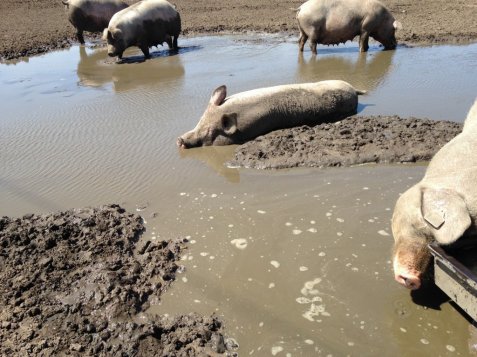Earlier this year I went to the Garden Press Event buried in the depths of the Barbican. Humming and hawing over whether to go, it seemed a long jump from home. Wrong wrong wrong. On arrival, a bright pink cupcake got pressed into my hand and spluttering, I fell into the hands of the soil magicians. What bliss - how often does the nerdy opportunity to talk soil structure for several hours on end with a range of enthusiasts?  When I came face to face with Charles Dowding, I really knew where my anorak was. “Charles who?” said my husband. To those of us who grow vegetables, he is the legend of No Dig - and if you follow the principles that Dowding has tried and tested, labouring will be cut down exponentially and the health of your soil will burgeon. It is simple - digging destroys intricate soil structure and the beneficial micr-organisms that dwell in it. Turned soil causes buried seeds to germinate. The use of mulches, fleeces over young crops and early diligence with a hoe are the ways to go. I have his Vegetable Garden Diary at my elbow and i love that it reminds me to prepare a new area for planting by spreading cardboard over it. The weeds will be smothered and insects and worms will get busy with processing the rotting roots. The husband is less keen on the cardboard look but it I am going to trial it and will report back.
When I came face to face with Charles Dowding, I really knew where my anorak was. “Charles who?” said my husband. To those of us who grow vegetables, he is the legend of No Dig - and if you follow the principles that Dowding has tried and tested, labouring will be cut down exponentially and the health of your soil will burgeon. It is simple - digging destroys intricate soil structure and the beneficial micr-organisms that dwell in it. Turned soil causes buried seeds to germinate. The use of mulches, fleeces over young crops and early diligence with a hoe are the ways to go. I have his Vegetable Garden Diary at my elbow and i love that it reminds me to prepare a new area for planting by spreading cardboard over it. The weeds will be smothered and insects and worms will get busy with processing the rotting roots. The husband is less keen on the cardboard look but it I am going to trial it and will report back.  By complete coincidence I have just got my hands on a book called “Good Soil” co-written by some very savvy and design conscious Swedish ladies. How is it that a tome largely about poo is so alluring that I can barely put it down? From pig muck to calcified seaweed the whole gamut of soil improving materials is lavishly illustrated and written about. I recommend this book all new millennial gardeners. It is all too easy to start with the plant and completely ignore the exigencies of the growing medium. I remember Christopher Lloyd, now on his way to garden beatification, stating that as much should be spent on the hole as on the plant. “Good Soil” takes the reader through the required plant nutrients, how to tell what soil you have from the colonising weeds and a myriad of other lore that is normally dull and in dusty text books. And so it is that we should attend to our own compost heaps. I spend a bit of time teaching school children of the delights of recycling garden waste to feed their plants. Composted material will be great for ‘gross feeders’ and under this label consider roses, peonies, dahlias and all the vegetable crops. Add to this, generous helpings to any shrub that has been pruned heavily.
By complete coincidence I have just got my hands on a book called “Good Soil” co-written by some very savvy and design conscious Swedish ladies. How is it that a tome largely about poo is so alluring that I can barely put it down? From pig muck to calcified seaweed the whole gamut of soil improving materials is lavishly illustrated and written about. I recommend this book all new millennial gardeners. It is all too easy to start with the plant and completely ignore the exigencies of the growing medium. I remember Christopher Lloyd, now on his way to garden beatification, stating that as much should be spent on the hole as on the plant. “Good Soil” takes the reader through the required plant nutrients, how to tell what soil you have from the colonising weeds and a myriad of other lore that is normally dull and in dusty text books. And so it is that we should attend to our own compost heaps. I spend a bit of time teaching school children of the delights of recycling garden waste to feed their plants. Composted material will be great for ‘gross feeders’ and under this label consider roses, peonies, dahlias and all the vegetable crops. Add to this, generous helpings to any shrub that has been pruned heavily.  Contrary to old fashioned lore, it is not a good idea to give doses of compost to perennials. It will encourage sappy growth and a failure to be self supporting. Consider a notion called ecological amplitude. To take the botanists’ path, it is to understand the place in nature that a given plant comes from and to pay lip service to those conditions. A plant of the dry steppe, given a wetter nutrient soil might just burgeon crazily without the usual limiting factors. Author and designer Henk Gerritsen along with Piet Oudolf paid enormous attention to the performance of plants. The idea and book of “Dream plants for the Natural Garden” takes account of soil but also how the plant behaves. It all begins and ends with knowing your soil and the “Good Soil” tome encourages the reader to gain that knowledge like a cook familiar with a recipe. Don’t worry if your soil is completely barren and scraped thin. This is exactly what opportunistic meadow flowers like. The lack of nutrients keeps heavy deep rooting weeds at bay. I have included a picture of a micro meadow sown into this sort of ground. To come full circle, my admiration for soil rests with the industrious activity of the immeasurable micro-organisms working under my feet. The gardener wants to do all he can to increase their activity - a mulch of rotted leaf mould or soil improver heaved onto the autumn or spring beds will go down a treat with the legions of invisible organisms. One last word: use mycorrhizal fungi when you are planting perennials, trees or shrubs. These take carbon from the host and go out and bond with beneficial fungi in the earth, encouraging the spread of healthy roots.
Contrary to old fashioned lore, it is not a good idea to give doses of compost to perennials. It will encourage sappy growth and a failure to be self supporting. Consider a notion called ecological amplitude. To take the botanists’ path, it is to understand the place in nature that a given plant comes from and to pay lip service to those conditions. A plant of the dry steppe, given a wetter nutrient soil might just burgeon crazily without the usual limiting factors. Author and designer Henk Gerritsen along with Piet Oudolf paid enormous attention to the performance of plants. The idea and book of “Dream plants for the Natural Garden” takes account of soil but also how the plant behaves. It all begins and ends with knowing your soil and the “Good Soil” tome encourages the reader to gain that knowledge like a cook familiar with a recipe. Don’t worry if your soil is completely barren and scraped thin. This is exactly what opportunistic meadow flowers like. The lack of nutrients keeps heavy deep rooting weeds at bay. I have included a picture of a micro meadow sown into this sort of ground. To come full circle, my admiration for soil rests with the industrious activity of the immeasurable micro-organisms working under my feet. The gardener wants to do all he can to increase their activity - a mulch of rotted leaf mould or soil improver heaved onto the autumn or spring beds will go down a treat with the legions of invisible organisms. One last word: use mycorrhizal fungi when you are planting perennials, trees or shrubs. These take carbon from the host and go out and bond with beneficial fungi in the earth, encouraging the spread of healthy roots.
